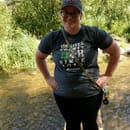People have the tendency to throw out a lot of stuff. Our culture is consumerism-based, and the environment is paying the price. We create trash like it’s candy, and that practice needs to change. For us college students, the products we use depends on two factors: price and convenience. Unfortunately, most cheap, convenient products create a lot of waste. Think of a Keurig. Most students have one because Keurigs make coffee quickly and we don’t have to put a lot of energy into making our coffee. Keurig machines are not the problem though, it’s the K-Cups that are needed to make the coffee. K-Cups as a whole are not recyclable, and they make up a ton of our waste. Keurig Green Mountain, the parent company of Keurigs and K-Cups, says that their K-Cups can be recycled, but only if you’re willing to put in the time and effort to break them down into their individual parts: plastic, metal, and coffee grounds. Most people don’t have the time or the patience to do that, so K-Cups end up in the trash. A single K-Cup takes 500 years to break down. Let’s say that you make coffee every morning for a whole year. That’s 365 K-Cups. It will take 182,500 years before all of the K-Cups are broken down. That’s longer than human civilization has been around.
It’s easy to see how wasteful K-Cups are, but so are other products that we use everyday. Here are just a few examples of wasteful products, and some eco-friendly alternatives.
Kitchen
Like I mentioned before, K-Cups create a lot of waste. Fortunately, reusable K-Cups are available, and are cheaper in the long run. I own a Keurig and a reusable K-Cup. Both my roommate and myself use the reusable K-Cup, and we love it. After we’ve made a cup of coffee, we have to clean the grounds out, but it’s a small price to pay compared to how many K-Cups we are keeping out of landfills. Reusable K-Cups are available in most places that Keurig products are sold, like Target, Wal-Mart, and Amazon. I got mine from Amazon for $8.99: https://www.amazon.com/Keurig-Universal-Reusable-Ground-Compatible/dp/B0737B6HGR/ref=sr_1_5?ie=UTF8&qid=1540750924&sr=8-5&keywords=reusable+k+cups
Plastic straws have been in the news recently, along with plastic bags, because more and more countries are banning their use. The movement started after a video went viral of a plastic straw being pulled from a sea turtle’s nose. A lot of people are calling on others to completely ditch plastic straws, but that’s not possible for some people. A great alternative to plastic straws are stainless steel straws. These are small enough that they can be packed in a bag and taken to restaurants and fast food places, and they’re easy to clean. You can get a pack of eight from Amazon for $7.99. The pack comes with four bent straws, four straight straws, and two cleaning brushes: https://www.amazon.com/ALINK-Replacement-Stainless-Steel-Straws/dp/B07B64CM7W/ref=sr_1_8?ie=UTF8&qid=1536597454&sr=8-8&keywords=stainless+steel+straws
Kitchen sponges- great on dishes, not so great on the environment. A traditional kitchen sponge is made of plastic, and usually can’t be recycled. I learned in my microbiology class last spring that they harbor a ton of bacteria, and it’s recommended to replace them every week. Compostable kitchen sponges are a great alternative. Most compostable kitchen sponges are made from cellulose, which comes from plant cell walls. Since cellulose is an organic material, it decomposes much faster than plastic, and is better for the environment. You can get a 6-pack on Amazon for $10.00 here: https://www.amazon.com/dp/B0083PZIGU?tag=bfnatalie-20&ascsubtag=4845332%2C12%2C25%2Cd%2C0%2C0%2Cbf%2C553%3A2%3B520%3A2
Every time I go grocery shopping, I bring reusable bags with me from home. They help me cut down on the number of plastic bags I bring home, and I can use them when traveling. Reusable bags are great, and they can be used for produce. Most people put their fruits and vegetables into the plastic bags that are so conveniently provided for us at the store. When we get home, the bags end up in the trash. Reusable mesh produce bags are see-through, so the cashier can still see what you are buying without having to open up the bag, and they are machine washable. You can get a set of nine (2 small, 5 medium, and 2 large) from Amazon for $14.97: https://www.amazon.com/dp/B00XSHEJ90?tag=bfjessie-20&ascsubtag=4878478%2C3%2C10%2Cmobile_web%2C0%2C0
You remember those coffee grounds that can be used in reusable K-Cups? Well, coffee grounds are compostable. If you live on-campus, your residence hall has a compost and recycling area. Like most students, my Keurig is in my room, and I don’t always want to walk down the hall to the compost bin when I need to empty my reusable K-Cup. This is where a kitchen compost bin comes in handy. These bins are great for storing food scraps and other compostable materials until you are ready to dump it out. I actually just ordered a compost bin, and I’m super excited for it to arrive because my roommates and I can finally start composting our coffee grounds. I got mine from Amazon for $19.99. It’s designed to prevent odors from leaking out of the bin, and they are super easy to clean. You can find one here: https://www.amazon.com/OXO-Grips-Clean-Compost-White/dp/B003ZFW0YQ/ref=sr_1_6?s=home-garden&ie=UTF8&qid=1540754176&sr=1-6&keywords=compost%2Bbucket%2Bfor%2Bkitchen&th=1
Laundry
Most people use fabric softeners or dryer sheets while drying their clothes to add in that extra scent, soften their clothes, and get rid of static electricity. Fabric softeners often contain chemicals that end up in local watersheds, and dryer sheets end up in landfills. A great alternative to both are wool dryer balls. You can either buy them premade, or you can find a ton of tutorials and blogs about how to make them at home. If you are used to liquid fabric softeners, there are recipes for making your own homemade fabric softener available. Here is a pack of six wool dryer balls for $9.95 from Amazon: https://www.amazon.com/dp/B01A4QLJHC?tag=bfnatalie-20&ascsubtag=4845332%2C16%2C25%2Cd%2C0%2C0%2Cbf%2C553%3A2%3B520%3A2
Cleaning
Most cleaning products contain synthetic chemicals that aren’t good for the environment. In fact, run-off water from households goes into the sewer system, and makes it way into local lakes and rivers. Run-off from homes contains chemicals that are used in cleaning products, laundry, and lawn fertilizer. Once these chemicals are in local lakes and rivers, they can poison the whole ecosystem. Chemical run-off from the Midwest is currently creating a large dead zone in the Gulf of Mexico. Since we need cleaning products to clean surfaces, dishes, and ourselves, a great alternative to toxic chemicals are biodegradable, all-natural compounds. Method is a relatively new brand, so their not as well known as Green Works or other companies, but all their products contain natural, biodegradable ingredients. Their packaging is made from recycled plastic, and they provide refills for their products. CVS carriers their Pink Grapefruit All-Purpose Cleaner for $3.99, 28 oz: https://www.cvs.com/shop/method-all-purpose-cleaner-pink-grapefruit-28-oz-prodid-1100021?skuid=211656. You can also check out more of their products, ingredient lists, and packaging here: https://methodhome.com/
Health
It’s that time of the year again, when the flu and the common cold go on a rampage through college campuses. Students and professors stock up on necessities to get through. One of those necessities are tissues. A lot of tissues end up in the trash, but Kleenex tissues can actually be composted because their tissues are made from cellulose fibers. Kleenex tissues can be found almost anywhere, but here is a set of four from Wal-Mart for $3.68: https://www.walmart.com/ip/Kleenex-Everyday-Facial-Tissues-85-Sheets-Box-4-Ct/24535421
Another household product that often ends up in lakes and rivers is hand soap. Most people wash their hands on a regular basis, which means we go through a lot of soap. Like the All-Purpose Cleaner, Method’s Foaming Hand Wash contains biodegradable, all-natural ingredients. They also have a wide range of scents, like Pomegranate, Mulled Cider, Cool Lavender, Green Tea + Aloe, Pink Grapefruit, and Hibiscus Flower. CVS also sells several Method hand washes, but they carry Lemon Mint, Sea Minerals, Sweet Water, and Pink Grapefruit. You can get a bottle for $4.59 here: https://www.cvs.com/shop/method-foam-hand-wash-10-oz-prodid-1320009?skuid=209635
Hopefully you’ve realized that common, everyday items can create a lot of waste, and sometimes we don’t even realize it. We need to be more environmentally conscious when it comes to what we use and how much we use.


